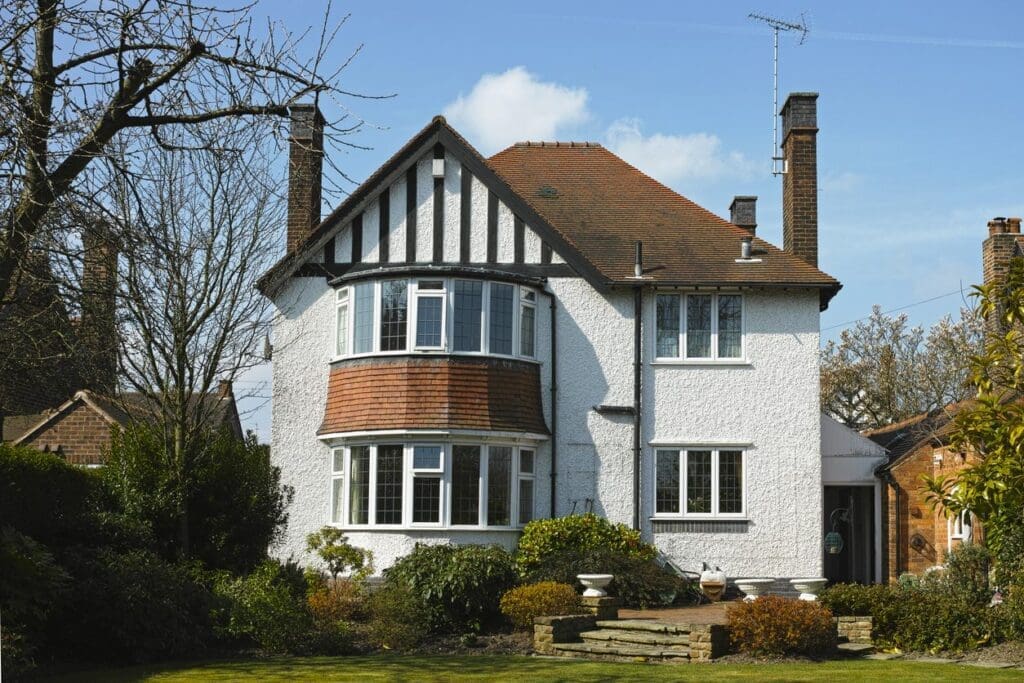When you’re considering buying a listed building or a property in a conservation area, you need to understand the special regulations and responsibilities that come with these historically significant homes. These properties offer unique character and historical value but require careful consideration before purchase.
Listed buildings are structures of special architectural or historic interest, and have legal protection against unauthorised alterations. Conservation areas are designated neighbourhoods with special architectural or historic importance that merit preservation.
Types of listed buildings
Listed buildings in England are categorised into three grades:
| Grade | Description | What it means for owners |
|---|---|---|
| Grade I | Buildings of exceptional interest | Only about 2.5% of listed buildings fall into this category. They have the strictest controls for alterations. |
| Grade II* | Particularly important buildings of more than special interest | Represent about 5.5% of listed buildings. Major alterations require careful planning. |
| Grade II | Buildings of special interest, warranting every effort to preserve them | Make up 92% of all listed buildings. Still protected but may have more flexibility. |
What is ‘listed building consent’?
Listed building consent is separate from regular planning permission and is required before making changes to listed buildings. This extra level of protection ensures historical features aren’t lost through inappropriate modifications.
The consent process helps protect the historical integrity while allowing necessary updates to make the property liveable. Applications are reviewed by conservation officers who specialise in historical properties.
Key point: You need to apply for listed building consent for any alterations that might affect the building’s character or appearance – even for seemingly minor changes like painting, replacing windows, or internal modifications.
Conservation area restrictions
Properties in conservation areas, whether listed or not, have restrictions to maintain the area’s special character. These typically include:
- Controls on demolition
- Limitations on extensions and alterations
- Restrictions on tree removal
- Special considerations for replacement windows and doors
Conservation area consent might be needed for certain changes, particularly those visible from public areas. Local authorities maintain detailed conservation area guidelines specific to each designated area.
Survey considerations for heritage properties
A standard Home Survey may not be sufficient for listed buildings or older properties in conservation areas. You’ll need a specialist heritage survey that:
- Identifies historical features requiring preservation
- Assesses the condition of traditional building materials
- Evaluates any unauthorised modifications made by previous owners
- Provides guidance on appropriate maintenance approaches
- Estimates realistic maintenance costs for traditional construction methods
These specialist surveys cost more than standard surveys, but provide essential information about the property’s condition and potential liabilities.
Insurance requirements
Insurance for listed buildings typically costs more than for standard properties because:
| Factor | Impact on insurance |
|---|---|
| Rebuild costs | Heritage properties often require specialist craftspeople and materials if damaged |
| Like-for-like replacement | Policies usually require authentic period replacements rather than modern alternatives |
| Specialist cover | You’ll need specific listed building insurance that understands conservation requirements |
Get quotes from insurers who specialise in heritage properties rather than standard home insurance providers. Be prepared to provide detailed information about the property’s historical features.
Maintenance responsibilities
Owning a listed building comes with legal obligations to maintain it properly. Unlike standard properties, letting a listed building fall into disrepair isn’t just unfortunate – it can be illegal.
Regular maintenance using appropriate traditional materials and techniques is essential. Local authorities have powers to enforce repairs if a listed building is neglected, potentially at your expense.
Establish a maintenance plan and budget for regular upkeep to avoid more costly interventions later.
The benefits of heritage property ownership
While the restrictions and responsibilities might seem daunting, owning a heritage property offers significant benefits:
- Unique character and historical features not found in modern homes
- Often located in desirable established neighbourhoods
- Potential for value preservation or growth due to their unique status
- The satisfaction of acting as a custodian of histo2rical architecture
- Connection to local history and heritage
Finding funding and grants
Some financial help is available for listed building owners:
- VAT concessions for certain approved alterations and renovations
- Heritage grant schemes from organisations like Historic England
- Local authority conservation grants for specific repairs
- Heritage Lottery Fund projects in some areas
Contact your local conservation officer to learn about available funding options in your area.





